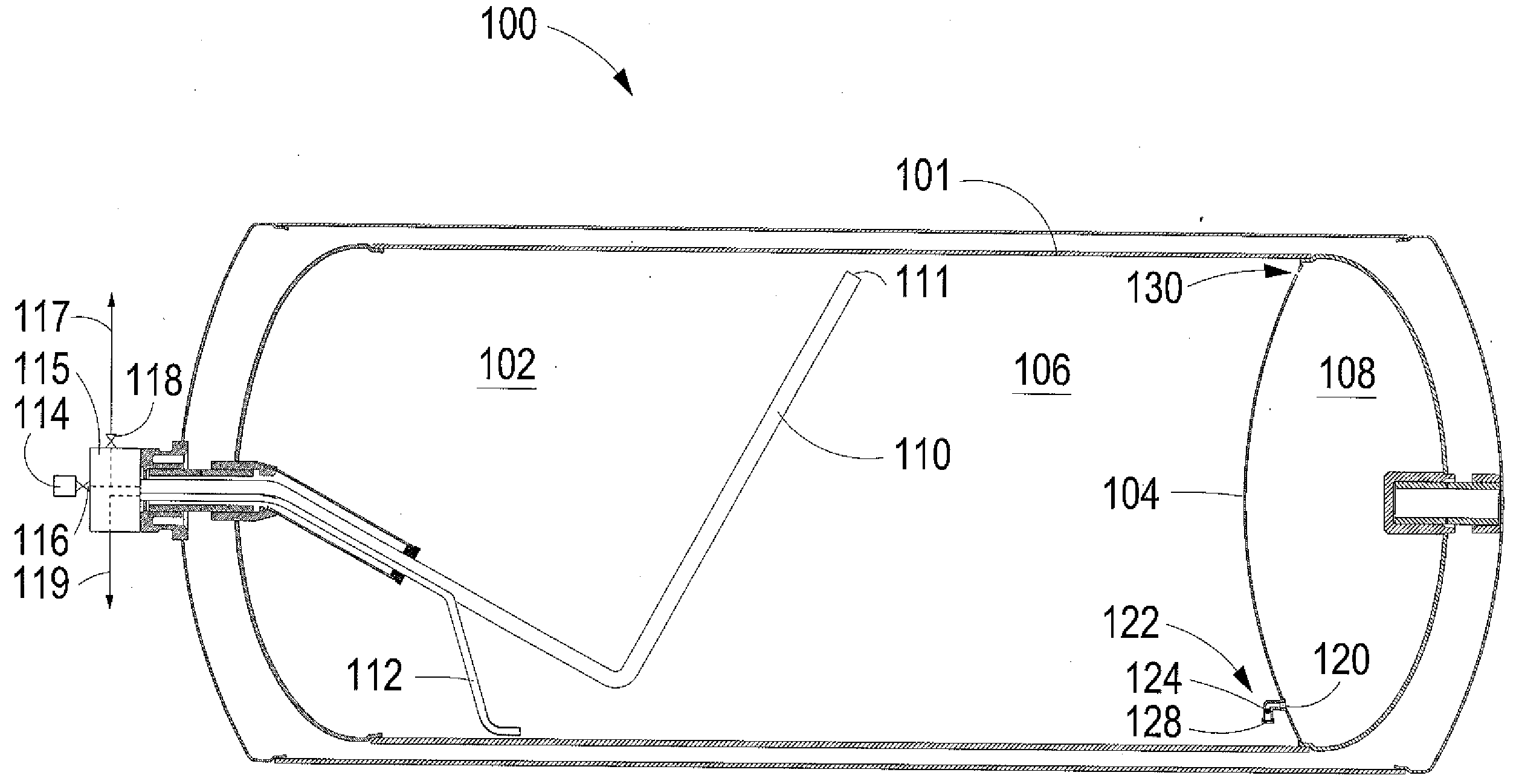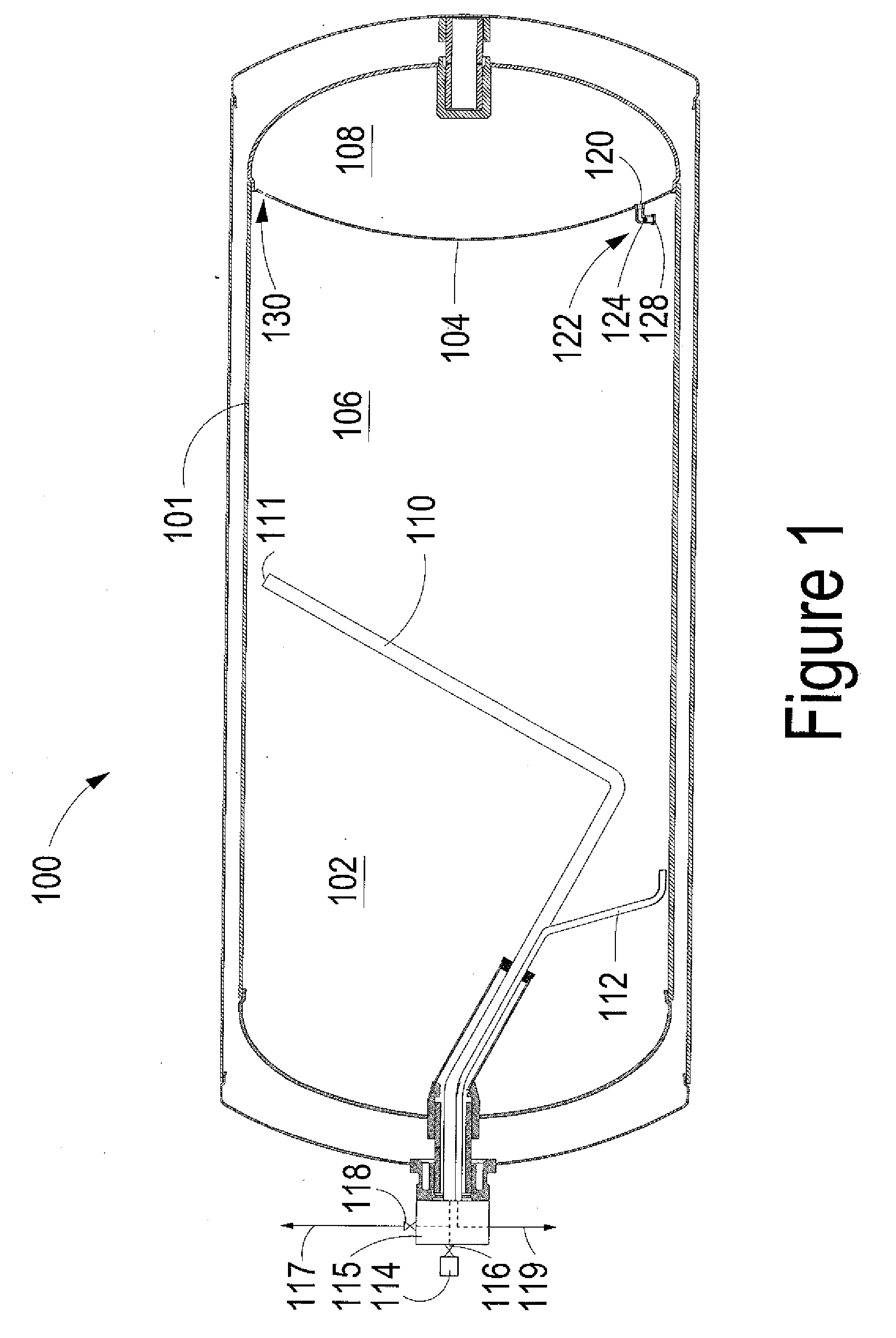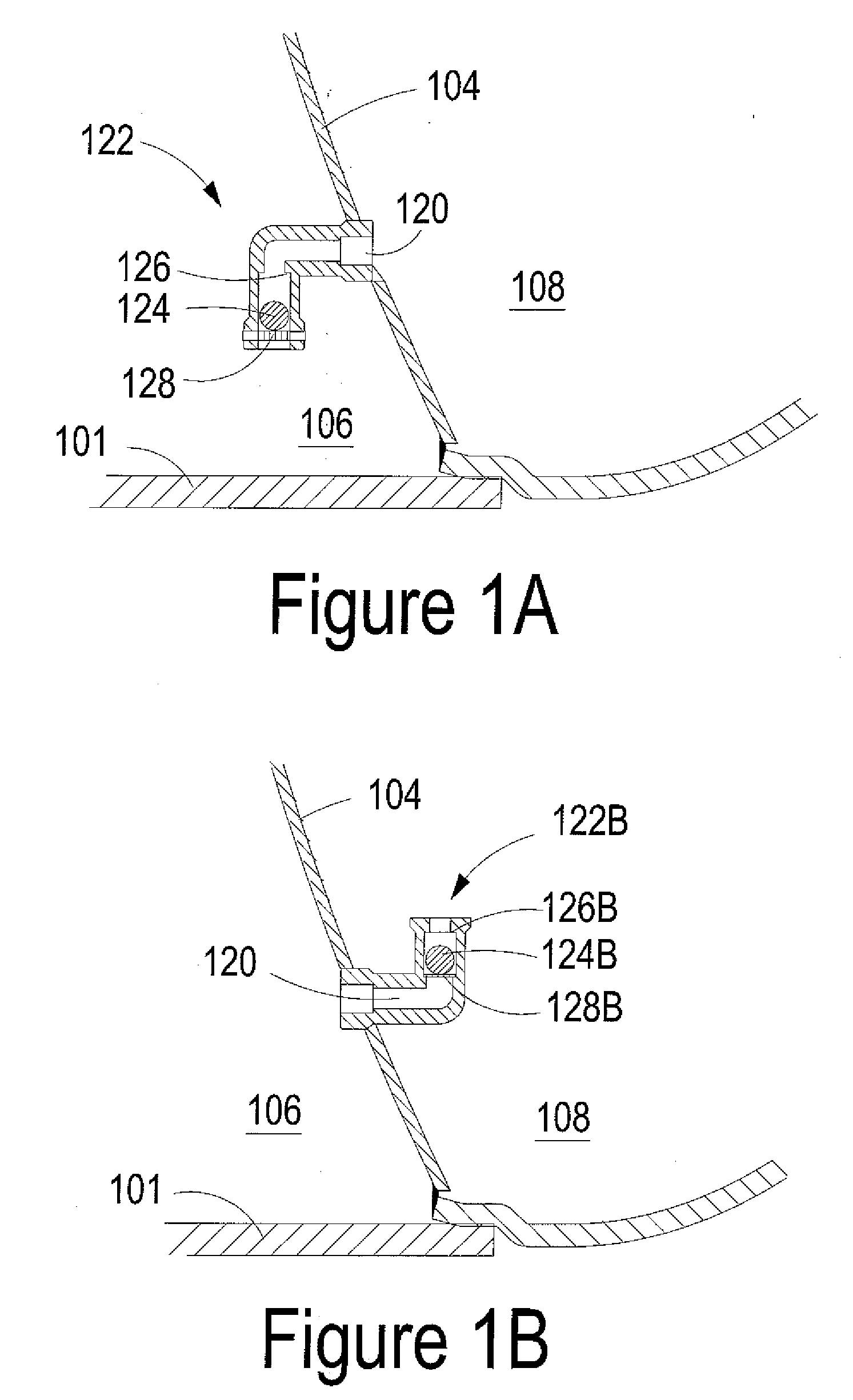Storage tank for a cryogenic fluid with a partitioned cryogen space
a cryogenic fluid and storage tank technology, which is applied in the direction of fixed capacity gas holders, gas/liquid distribution and storage, vessel construction details, etc., can solve the problems of increasing the bulk temperature and pressure of the cryogenic fluid, slowing down the density of the liquefied gas, and reducing the robustness of the valve mechanism, so as to improve the robustness of the valve, the effect of simplifying the valve mechanism
- Summary
- Abstract
- Description
- Claims
- Application Information
AI Technical Summary
Benefits of technology
Problems solved by technology
Method used
Image
Examples
Embodiment Construction
)
[0033]With reference to the Figures, storage tanks 100, 300 and 400 are examples of embodiments that are particularly suited for holding cryogenic fluids inside thermally insulated vessel 101, which defines respective cryogen spaces 102 and 402. FIGS. 1, 3 and 4 show that the present design can be applied to storage tanks with different configurations for the partition, and for storage tanks that are used for delivering the stored fluid at lower or relatively high pressures. For example, the embodiment of FIG. 3 shows a storage tank with an internal pump that can be used to deliver the stored fluid at a higher pressure. The different illustrated embodiments show that the present design can be useful for many different applications where such storage tanks are employed for holding and dispensing liquefied gases. For example, gases can be stored and dispensed in liquefied form to provide refrigeration for industrial processes or if the gas is used in the gaseous phase it can be store...
PUM
 Login to View More
Login to View More Abstract
Description
Claims
Application Information
 Login to View More
Login to View More - R&D
- Intellectual Property
- Life Sciences
- Materials
- Tech Scout
- Unparalleled Data Quality
- Higher Quality Content
- 60% Fewer Hallucinations
Browse by: Latest US Patents, China's latest patents, Technical Efficacy Thesaurus, Application Domain, Technology Topic, Popular Technical Reports.
© 2025 PatSnap. All rights reserved.Legal|Privacy policy|Modern Slavery Act Transparency Statement|Sitemap|About US| Contact US: help@patsnap.com



